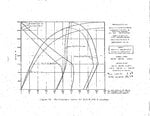YOU STILL DON'T GET IT!A hit in the reduction gearbox is the same whether it was mounted on the engine or remotely like the P-39. No other reduction gearboxes were armored
On WWII era engines, the reduction gears weren't "mounted on" the engine, they were integral to it. A hit to the nosecase was a hit to the engine and would generally lead to failure, whether immediate or delayed. A "straight drive" engine, with no reduction gears like the P39 had, was an anomaly, not the norm. P39/P63 was different in that a hit to the reduction box could "unload" the engine, causing it to overspeed to destruction, with perhaps a catastrophic driveshaft failure, to boot. Not good for pilot survival.

